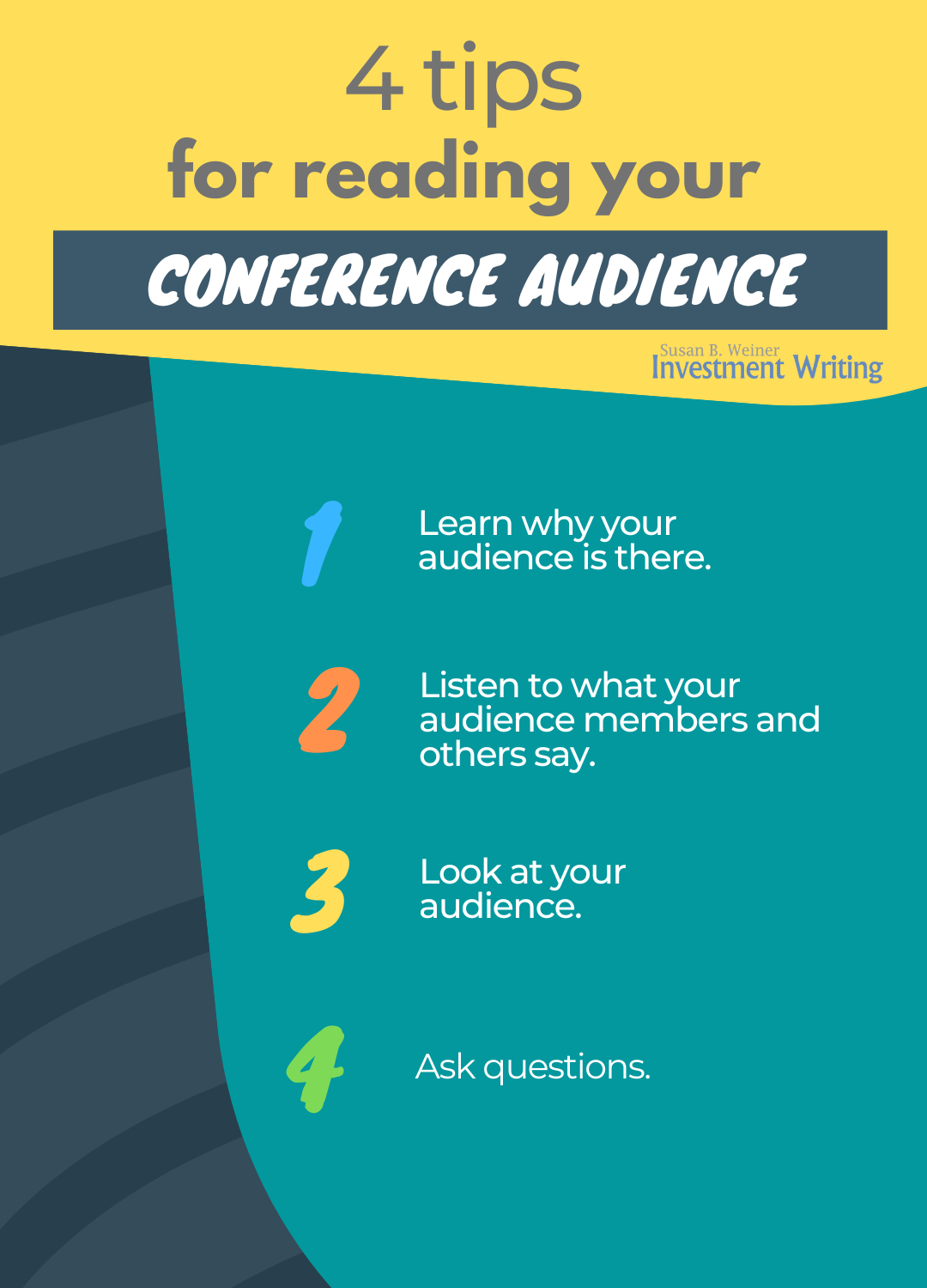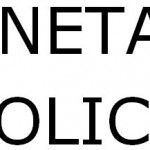4 tips for reading your audience at conferences
When I prepared to speak at a Financial Planning Association national conference, the following quote caught my eye:
You don’t have good or bad audiences. You have audiences you read or you fail to read.
-Richard Hall, Brilliant presentations:
What the best presenters know, say and do
This made me think about how to read an audience.

1. Learn why your audience is there
Once you understand your audience, you can appeal to their hopes, fears, and dreams. I stress this in my writing advice, too.
When I’ve spoken to FPA audiences on “Writing Emails and Letters that People Will Read” people will be there partly for the CE credit, but also, more importantly, so they can connect better with clients and others.
Borrow a technique from me: Ask your audiences to fill out a brief survey before they attend your talk. Of course, this is most effective if participants must register and provide their contact information well in advance of your presentation.
On the other hand, today there are apps that let you poll a live in-person audience. Those polls, with results projected on-screen also help to keep your audience engaged.
2. Listen
Listen to members of your audience and what people tell you about your audience, including any sensitivities. Ignore this information, and you may offend. You’ll certainly fail to make the best possible impression.
You should also listen to what people say during your live presentation. During webinars, I often have a colleague monitor the chat for me.
3. Look
Look at your audience. Make eye contact. Assess what seems to resonate and what falls flat.
4. Ask questions
I’m a big fan of interactive presentations. When people participate, especially when they apply the information you present, they learn more. This also raises the positive energy in the room.
I have had great experiences with asking members of in-person presentations to break into groups of two or three to do an exercise to apply the lessons I’m teaching them. The level of the participants’ buzz helps me to understand how engaged they are.
Note: I updated this post in December 2022.





